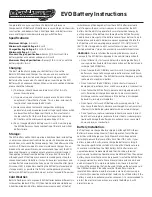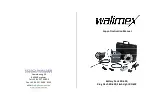
34
Rev. 0
The DC2732A can be used in conjunction with the Linduino
and the DC2617A in a CAN based evaluation and test envi-
ronment, which is described in the following paragraphs.
HARDWARE REQUIREMENTS
• DC2617A (CAN to isoSPI shield).
• DC2732A (LTC2949 demo board).
• Ethernet cable.
• 5V power supply.
• Linduino (DC2026).
• Power to the Linduino (either via USB or AC
ADAPTOR IN).
• Optional: 120Ω reset pull-up on Linduino between
RST and IOREF to prevent Linduino reset in case
Linduino is connected to the USB port of a PC, but
its COM port is not opened.
SOFTWARE REQUIREMENTS
• Some CAN analyzer or CAN master to control
the DC2732A_CAN and receive messages (e.g.,
BUSMASTER).
• DC2732A_CAN.ino programmed to the Linduino.
APPENDIX B: CAN BASED EVALUATION
• DC2732A_CAN.dbf loaded to the CAN analyzer
software.
• Optional: Serial terminal software (e.g., Arduino IDE’s
serial monitor) connected to the Linduino’s COM port.
SETUP THE HARDWARE
Put the DC2617A on top of the Linduino. Connect
LTC2949 demo board via an Ethernet cable to the RJ45
connector. Connect power to the Linduino (either via USB
or AC ADAPTOR IN). Set JP1 on DC2617A to ARD and JP2
to ON to enable 120R CAN bus termination.
Note 1:
If the Linduino is connected to a USB port of
a PC, depending in the operating system, the board
will make periodic resets. This is caused by Windows
and the USB COM port driver accessing the COM port
assigned to the Linduino. This can be prevented by
either making a connection via a serial terminal to
the COM port or by connecting a 120R pull-up on
Linduino between RST and IOREF. If a plain external
USB power supply or the “AC ADAPTOR IN” is used
to power the Linduino, this problem does not appear.
Note 2:
5V supply input of the LTC2949 demo board
may be connected to V
CC
, GND turrets of DC2617A.
Still this is not recommended as it shorts the galvanic
isolation between LTC2949 and DC2617A.
Figure 50.
















































